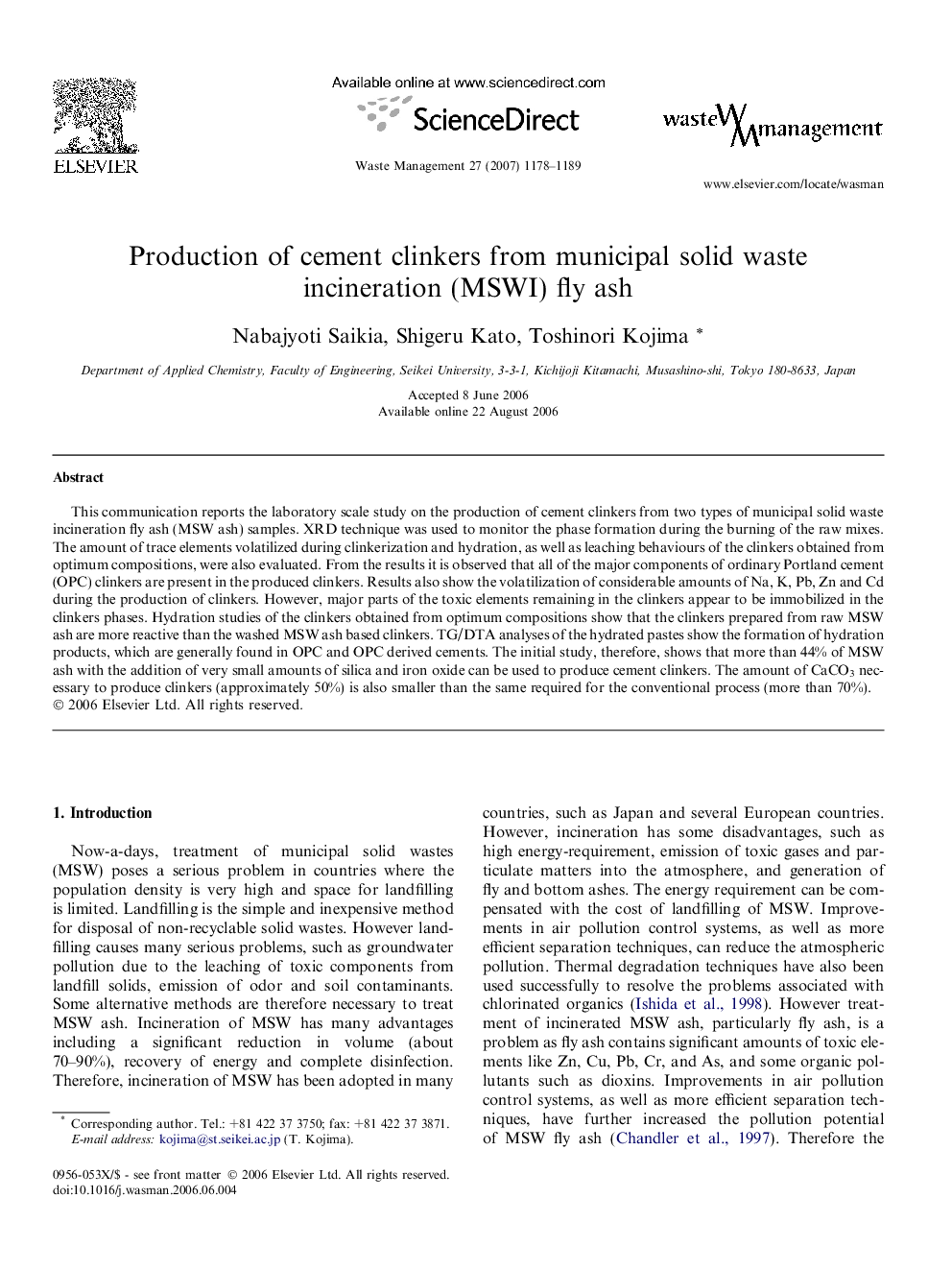| Article ID | Journal | Published Year | Pages | File Type |
|---|---|---|---|---|
| 4474112 | Waste Management | 2007 | 12 Pages |
This communication reports the laboratory scale study on the production of cement clinkers from two types of municipal solid waste incineration fly ash (MSW ash) samples. XRD technique was used to monitor the phase formation during the burning of the raw mixes. The amount of trace elements volatilized during clinkerization and hydration, as well as leaching behaviours of the clinkers obtained from optimum compositions, were also evaluated. From the results it is observed that all of the major components of ordinary Portland cement (OPC) clinkers are present in the produced clinkers. Results also show the volatilization of considerable amounts of Na, K, Pb, Zn and Cd during the production of clinkers. However, major parts of the toxic elements remaining in the clinkers appear to be immobilized in the clinkers phases. Hydration studies of the clinkers obtained from optimum compositions show that the clinkers prepared from raw MSW ash are more reactive than the washed MSW ash based clinkers. TG/DTA analyses of the hydrated pastes show the formation of hydration products, which are generally found in OPC and OPC derived cements. The initial study, therefore, shows that more than 44% of MSW ash with the addition of very small amounts of silica and iron oxide can be used to produce cement clinkers. The amount of CaCO3 necessary to produce clinkers (approximately 50%) is also smaller than the same required for the conventional process (more than 70%).
